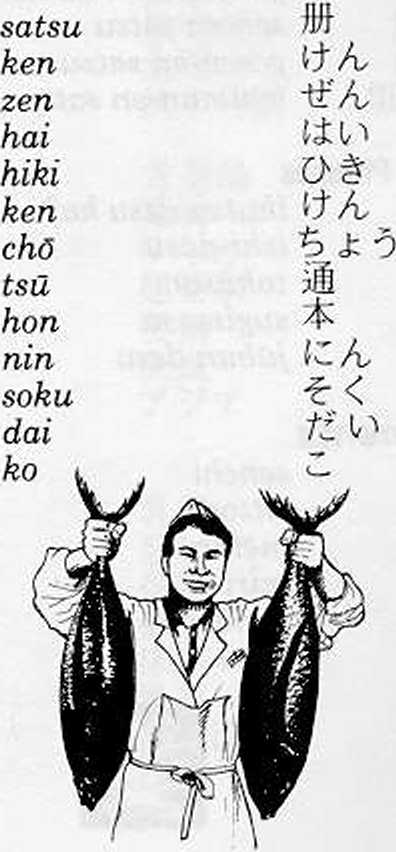PG055
110 Numbers
|
50 |
goju |
/£+ |
|
60 |
rokuj u |
A+ |
|
70 |
shichiju |
-trh |
|
80 |
hachiju |
A+ |
|
90 |
kuj u |
7l+ |
|
100 |
hyaku |
5 |
|
125 |
hyaku nijugo |
5—+S |
|
200 |
nihyaku |
-S |
|
300 |
sanbyaku |
HS |
|
400 |
yonbyaku |
ms |
|
500 |
gohyaku |
'■EJS |
|
600 |
ropphyaku |
AS |
|
700 |
nanahyaku |
-ts |
|
800 |
happyaku |
AS |
|
900 |
kyuhyaku |
AS |
|
1000 |
sen |
T |
|
1367 |
sensanbyaku |
TT.SATA |
|
2000 |
rokujushichi nisen |
-T- |
|
3000 |
sanzen |
H-T |
|
7000 |
nanasen |
-tT- |
|
10,000 |
man or ichiman |
-Ti |
|
30,000 |
sanman |
=75 |
|
100.000 |
juman |
+75 |
|
1,000,000 |
hyakuman |
575 |
|
Ordinals | ||
|
Ordinals are |
formed by adding ban to a number: | |
|
first |
ichiban | |
|
second |
niban | |
|
third |
sanban |
=# |
Others
|
once |
ichido |
_ ,.i.. |
|
twice |
nido |
—16 ^ . |
|
three times |
sando |
Counters
Most things you want to count in Japanese will reąuire a counter after the number. In most cases the Chinese-derived numerals are used with the counters. Thus ‘three booksJ becomes san-satsu.

books
buildings
chopsticks
cups
fish
houses
knives
letters
pencils
people
shoes
vehicles
other items
Wyszukiwarka
Podobne podstrony:
CCF20090702�136 272 Indeks osób Hiob 202, 203, 205, 211 Husserl Edmund 41,42, 50, 62,63, 65, 66, 70,
10 dB 20 dB 35 dB 45 dB 50 dB 55 dB 60 dB 70 dB S0 dB 85 dB 90 dB 95 dB 110 dB 120 dB 130 dB 16
10 dB 20 dB 35 dB 45 dB 50 dB 55 .Ilł 60 dB 70 dB S0 dB 85 dB 90 dB 95 dB 110 dB 120 dB 130 dB
S5004430 Castłun. Die Kreuzmunzen bei den Kitem und den Alaunen, in: SNR 50, 1971. £ 92-124. M
IMGp89 (4) 110 110 ISO. 3) I (50.0)n« (50.»> (80.2) czyli, rw pocdlawla pewyMzycłi wzarbw«v» 1
Skanowanie 11 04 12# 50 oj £ _. i ©łu/ ż J. b ^ ^ ^Jajo, /uIcW 3 ^»gU_ h^^o^Ta__
172 PRZEMYSŁ CHEMICZNY 1(1939) Warunki wulkanizacji 50 min. w 143®C 60 min. w 143° C Czas trwania
HPIM7983 [50 ] c£>:iU ZZ r» i Q r>:2l L;CJEl sLS —■> - i _i_i I id S -‘ o, _ □ . liicj _j
HPIM8043 [50 ] isłj £>b -ic-----5»łiQ-Ippgl U Vf-----Klf*p f
img017 (7) (c i$ Ł, : ću ź: £• < T^i V J 60 - ri rfc-rCc<* Sc, pr?CÓit2A3«M.&rHZ Uo CJmA
TheTripleHelix 10 Number of facets Ś £ g £ O1i ilSili
więcej podobnych podstron